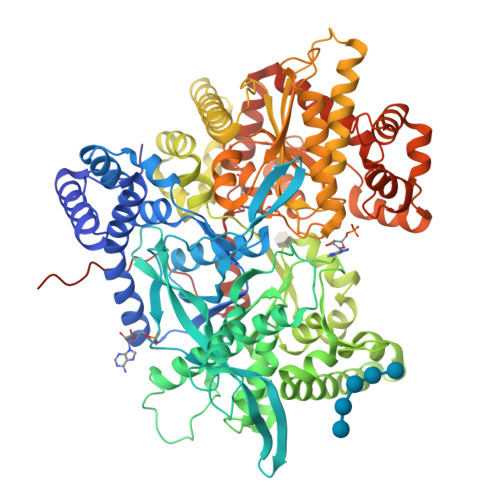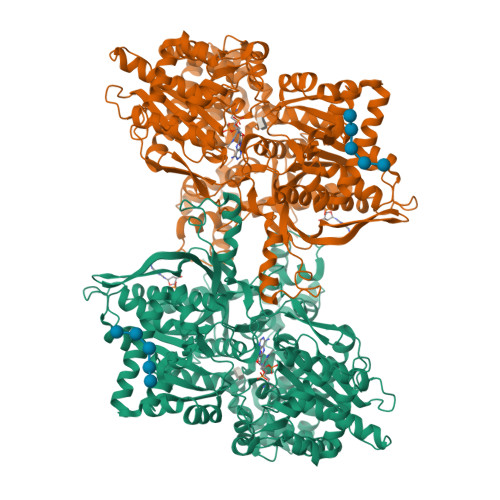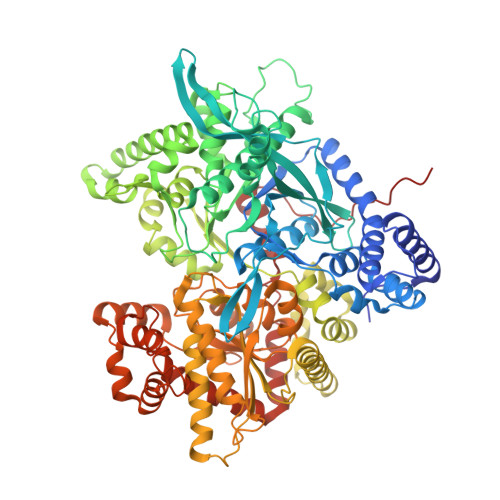Refined crystal structure of the phosphorylase-heptulose 2-phosphate-oligosaccharide-AMP complex.
Johnson, L.N., Acharya, K.R., Jordan, M.D., McLaughlin, P.J.(1990) J Mol Biology 211: 645-661
- PubMed: 2106586
- DOI: https://doi.org/10.1016/0022-2836(90)90271-M
- Primary Citation of Related Structures:
6GPB - PubMed Abstract:
The crystal structure of phosphorylase b-heptulose 2-phosphate complex with oligosaccharide and AMP bound has been refined by molecular dynamics and crystallographic least-squares with the program XPLOR. Shifts in atomic positions of up to 4 A from the native enzyme structure were correctly determined by the program without manual intervention. The final crystallographic R value for data between 8 and 2.86 A resolution is 0.201, and the overall root-mean-square difference between the native and complexed structure is 0.58 A for all protein atoms. The results confirm the previous observation that there is a direct hydrogen bond between the phosphate of heptulose 2-phosphate and the pyridoxal phosphate 5'-phosphate group. The close proximity of the two phosphates is stabilized by an arginine residue, Arg569, which shifts from a site buried in the protein to a position where it can make contact with the product phosphate. There is a mutual interchange in position between the arginine and an acidic group, Asp283. These movements represent the first stage of the allosteric response which converts the catalytic site from a low to a high-affinity binding site. Communication of these changes to other sites is prevented in the crystal by the lattice forces, which also form the subunit interface. The constellation of groups in the phosphorylase transition state analogue complex provides a structural basis for understanding the catalytic mechanism in which the cofactor pyridoxal phosphate 5'-phosphate group functions as a general acid to promote attack by the substrate phosphate on the glycosidic bond when the reaction proceeds in the direction of glycogen degradation. In the direction of glycogen synthesis, stereoelectronic effects contribute to the cleavage of the C-1-O-1 bond. In both reactions the substrate phosphate plays a key role in transition state stabilization. The details of the oligosaccharide, maltoheptaose, interactions with the enzyme at the glycogen storage site are also described.
Organizational Affiliation:
Laboratory of Molecular Biophysics, Oxford, U.K.





















